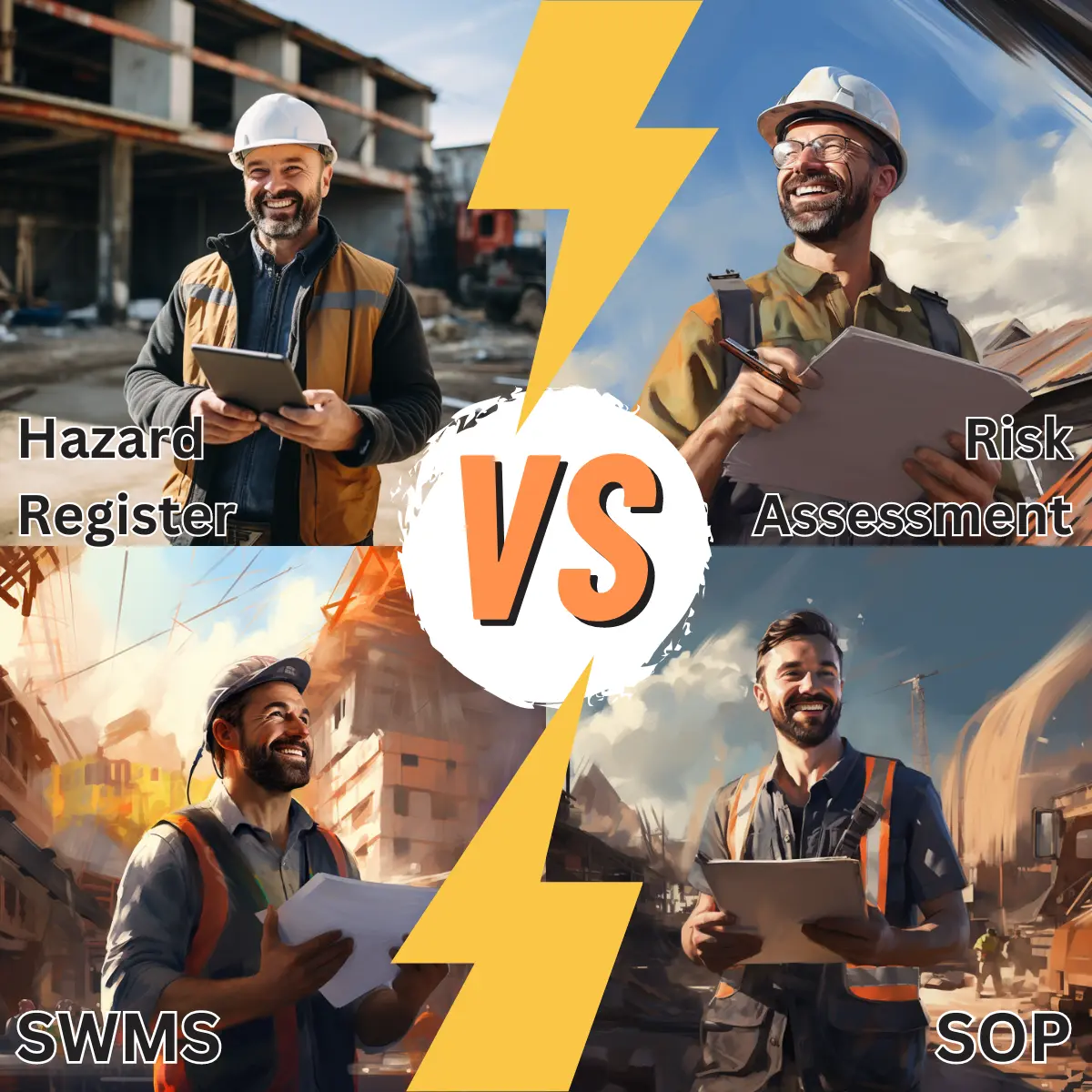Safety management tools such as Hazard Registers, Risk Assessments, Safe Work Method Statements (SWMS), Job Safety and Environmental Analysis (JSEA), Task Analysis, and Standard Operating Procedures (SOP) play critical roles in identifying hazards, assessing risks, and establishing robust safety protocols. Understanding the nuances between these tools and selecting the correct one for each situation is not just important, but absolutely crucial for building a comprehensive and effective safety program.
In this article we delve into a comparison of the most common safety management tools, their differences, similarities, and when to use them.

| Aspect | Hazard Registers | Risk Assessments | Safe Work Method Statements (SWMS) | SOP (Standard Operating Procedures) |
|---|---|---|---|---|
| Purpose | To identify, record, and assess potential hazards and risks associated with specific tasks or activities. | To systematically evaluate potential risks and assess their likelihood and severity in order to implement appropriate control measures. | To outline the step-by-step procedures for performing high-risk tasks, ensuring safety and risk mitigation. | To provide specific instructions for routine tasks, ensuring consistency and standardization. |
| When to use | Before or during the planning phase of a project or task. | Before starting a project, introducing new procedures, or making significant changes to existing processes. | Before commencing high-risk work activities. | For routine, repetitive tasks or processes. |
| Interchangeable with | Risk assessments are often included within hazard registers but can be distinct. | Hazard registers may include a risk assessment, but they focus on identifying hazards rather than outlining specific work procedures. | Risk assessments may be part of a SWMS, but the SWMS provides detailed work procedures beyond risk evaluation. Other documents very similiar to SWMS are JSEA (Job Safety and Environmental Analysis) and Task Analysis. | SOPs may incorporate information from risk assessments or task analysis, but they primarily focus on detailed procedures. |
| Differences | Hazard registers identify potential hazards and risks without outlining specific work procedures. | Risk assessments evaluate the likelihood and severity of identified hazards but do not provide detailed work procedures. | SWMS provides step-by-step procedures for high-risk tasks but may not cover broader job hazards. | SOPs focus on detailed instructions for routine tasks and may not include risk assessments or task breakdowns. |
The significance of knowing the differences between Hazard Registers, Risk Assessments, SWMS, JSEA, Task Analysis, and SOPs cannot be overstated. Correctly selecting and using the appropriate safety tool for each situation lays the foundation for a robust and effective safety management system.
By tailoring safety measures, prioritizing high-risk activities, conducting thorough hazard analysis, and adhering to industry standards, organizations can create a proactive safety culture that protects their most valuable asset – their workforce.
Empowering employees with the knowledge and tools to work safely fosters a culture of accountability and responsibility, where safety becomes an integral part of everyday work practices. In the end, it is this commitment to safety that paves the way for organizational success and growth in today's dynamic and competitive business landscape.